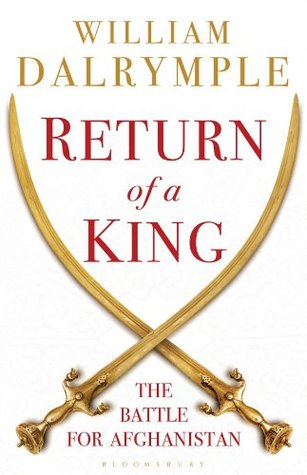More on this book
Community
Kindle Notes & Highlights
Read between
September 17 - October 2, 2021
the Afghans were perceived as mere pawns on the chessboard of western diplomacy, to be engaged or sacrificed at will. It was a precedent that was to be followed many other times, by several different powers, over the years and decades to come; and each time the Afghans would show themselves capable of defending their inhospitable terrain far more effectively than any of their would-be manipulators could possibly have suspected.
It was during this period that the country accelerated its transformation from the sophisticated centre of learning and the arts, which led some of the Great Mughals to regard it as a far more elegantly cultured place than India, into the broken, war-torn backwater it was to become for so much of its modern history.
It was in many ways less a state than a kaleidoscope of competing tribal principalities governed through maliks or vakils, in each of which allegiance was entirely personal, to be negotiated and won over rather than taken for granted.
Before Shah Shuja’s arrival, Ludhiana was known mainly as a centre of the flesh trade, through which girls from the Punjab Hill States and Kashmir – considered the fairest and most beautiful in the region – passed into slavery in the Sikh-controlled Punjab and Hindustan.16
Only a year after Napoleon’s 1812 retreat from Moscow, the Russian artillery had massacred Fatteh Ali Shah Qajar’s Persian army, and proclaimed the ‘liberation’ of the Eastern Christians of Armenia and Georgia. Russia then annexed great swathes of modern Armenia and Azerbaijan – what had been until then the Persian Empire in the Caucasus.
the Great Game – what the Russians would later call ‘the Tournament of Shadows’
So was born a dangerously contradictory and two-faced British policy towards Afghanistan, with Burnes making friendly overtures to Dost Mohammad and the Barakzais, even as another arm of the government was secretly backing an uprising against them. As time would show, this approach was not just duplicitous: it was a recipe for diplomatic disaster that would soon blow up in the faces of everyone involved.
That night, Dost Mohammad and his followers made it safely to the shelter of Khamard, the fortress of the slave-trading Mir Wali. ‘The Amir spent the next two months as honoured guest of the Uzbeks,’
By withdrawing a large part of the Bombay army from Afghanistan and diverting much-needed resources away from consolidating the occupation of Afghanistan to his new Opium War, Auckland ensured that Macnaghten would never have the troops or the money he would need to make Shah Shuja’s rule a success.
Mirza ‘Ata. In his narration, when the ghazis burst into the compound, it is said that Burnes at that moment was in the private quarters of the house, taking a bath with his mistress in the hot water of lust and pleasure . . . At this point, the guerrilla Ghazis burst in and dragged them all from the changing room of life, cut them down with their swords and threw their corpses into the ash-pit of death.
All 300 of the wounded who were left behind, as well as any of the sepoys or their wives captured alive, were distributed among the Tajik chiefs and immediately sold as slaves.72
A slave trader who visited the fortress where the hostages were being kept told Lady Sale that ‘400 Hindoostanees have been entrapped at Kabul, under an assurance of safe conduct to Jalalabad . . . Men sell for forty-six rupees; and women for twenty-two, each.’ Uzbek slave traders who dominated the Afghan market were especially feared for the merciless brutality they habitually displayed to their captives.
John Haughton, who had escaped from Charikar with Eldred Pottinger, and who now succeeded in finding, and in many cases liberating from slavery, no fewer than 165 of his Gurkhas whom he managed to track down in the fields, streets and slave markets of Kabul.


